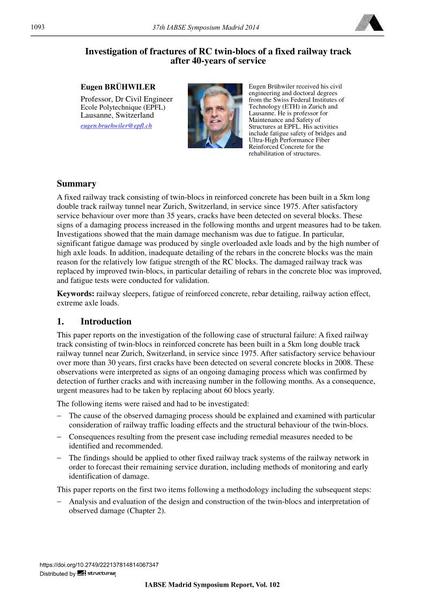Investigation of fractures of RC twin-blocs of a fixed railway track after 40-years of service

|
|
|||||||||||
Détails bibliographiques
| Auteur(s): |
Eugen Brühwiler
|
||||
|---|---|---|---|---|---|
| Médium: | papier de conférence | ||||
| Langue(s): | anglais | ||||
| Conférence: | IABSE Symposium: Engineering for Progress, Nature and People, Madrid, Spain, 3-5 September 2014 | ||||
| Publié dans: | IABSE Symposium Madrid 2014 | ||||
|
|||||
| Page(s): | 1093-1100 | ||||
| Nombre total de pages (du PDF): | 8 | ||||
| Année: | 2014 | ||||
| DOI: | 10.2749/222137814814067347 | ||||
| Abstrait: |
A fixed railway track consisting of twin-blocs in reinforced concrete has been built in a 5km long double track railway tunnel near Zurich, Switzerland, in service since 1975. After satisfactory service behaviour over more than 35 years, cracks have been detected on several blocks. These signs of a damaging process increased in the following months and urgent measures had to be taken. Investigations showed that the main damage mechanism was due to fatigue. In particular, significant fatigue damage was produced by single overloaded axle loads and by the high number of high axle loads. In addition, inadequate detailing of the rebars in the concrete blocks was the main reason for the relatively low fatigue strength of the RC blocks. The damaged railway track was replaced by improved twin-blocs, in particular detailing of rebars in the concrete bloc was improved, and fatigue tests were conducted for validation. |
||||
